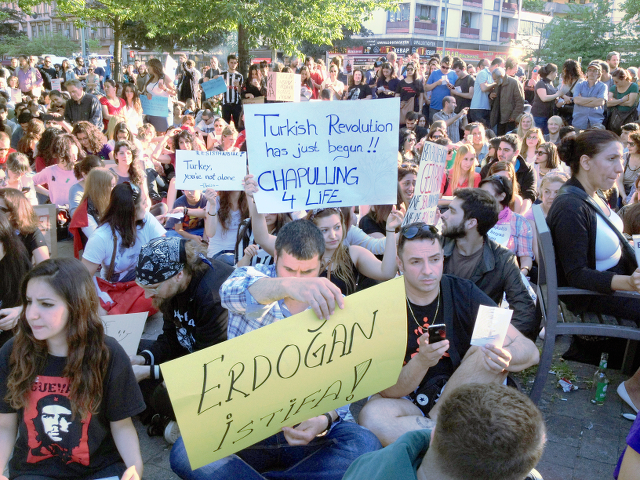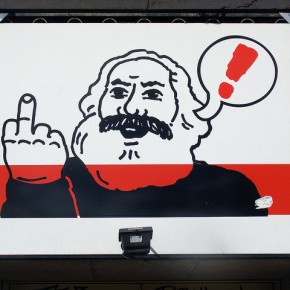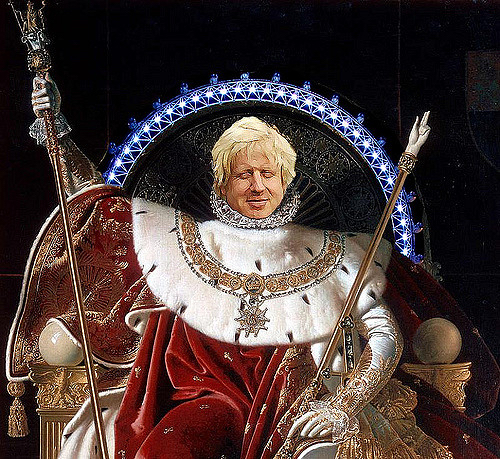They came as guest workers. They came as manual laborers. They came to fill a labor shortage. You’ve heard it all before. It’s the story of Turkish immigration to Germany. The most popular one, that is. But hardly the most complex of accounts. One which, only reflects German government policy, to fuel the country’s post-war reconstruction. Having suffered nearly 4 million casualties during WWII, Hitler’s army had drained the country of its workforce.
Judging from the Turkish flyers common to German cities like Berlin, the promise of jobs was not the only factor encouraging immigration. There were political reasons, as well. For example, between 1960 and and 1993, Turkey witnessed five separate military coups. Irrespective of Germany’s migrant worker policies, that ought to be enough of an explanation. If only such accounts were more widespread. Still, acknowledgement is there, however unspoken.
Berliners were treated to an especially significant reminder if last summer, as solidarity rallies, in support of Istanbul’s Gezi Park protests, took place in heavily Turkish neighborhoods such as Neukolln and Kreuzberg. From long marches to mass rallies, it was clear where the city’s Turkish community stood. Few places in Europe were less welcoming to Prime Minister Recep Tayyip Erdogan than Berlin. Imagine Margaret Thatcher, in 1980-era Brixton. That was the vibe.
If the flyers photographed below are evidence, the anger hasn’t subsided. Photographed in December and January, they’re a small part of a continuous stream of anti-Erdogan media typical to Berlin.

Söyleşi = Dialogue
The aftermath of Gezi is an autonomous media and the BirGün (one day) Newspaper
(headlines from the BirGün insets, from left to right)
-Yesterday we were bandits, today we are marauders. You relax…
-This opposition suits you
-We’re also keeping our grandmothers at home
İbrahim Aydın
Presidents of the board of directors of BirGün Newspaper
21 December 2013, Saturday, 16:00

Turkey is the in claws of the AKP-Cemaat* the final measurements of the maturing economy and the communal opposition.
Professor Doctor Hayri Kozanoğlu
Academic – Writer
After completing his industrial engineering degree at ODTÜ, he completed his masters and doctorate in the subject of business finance. He is a professor of political economics at Marmara University. He is the writer of many books, such as In the Middle of the Anatomy of the Global Crisis, Neoliberalism’s Real 100, Both Equality and Freedom: For the 21st centuries Socialism, Globalization’s Specter. He was a founding member, and at one point the president, of the ÖDP (Freedom and Solidarity Party). He is a columnist for BirGün Newspaper.
11 January, 2014, Saturday, 16:00
Translation Note: Saying ‘Cemaat’ is equivalent to saying how the far right in the US is in the clutches of the evangelicals, with the Cemaat representing Gülen’s movement.
Translated from the Turkish by Jeremy Bender. Photographs courtesy of Joel Schalit.





